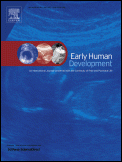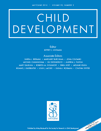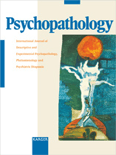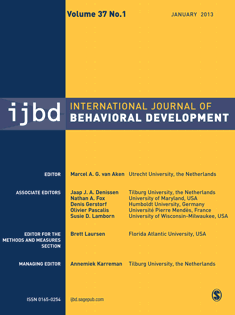
DEVELOPMENT AND PSYCHOPATHOLOGY
Scope & Guideline
Connecting Research to Real-World Mental Health Solutions
Introduction
Aims and Scopes
- Developmental Psychopathology Framework:
The journal focuses on the developmental psychopathology framework, which examines the interplay between developmental processes and psychopathological outcomes, emphasizing longitudinal studies that track changes over time. - Multifactorial Influences:
It highlights the multifactorial influences on mental health, including genetic, environmental, and social factors, and how these factors interact across different stages of development. - Interdisciplinary Approaches:
The journal promotes interdisciplinary approaches, incorporating insights from psychology, neuroscience, genetics, social sciences, and public health to provide a comprehensive understanding of developmental psychopathology. - Focus on Vulnerable Populations:
Research often centers on vulnerable populations, such as children exposed to adversity, those with developmental disorders, and marginalized groups, to better understand the unique challenges they face and identify protective factors. - Longitudinal and Cross-Generational Studies:
It emphasizes the importance of longitudinal and cross-generational studies to explore the stability and change of mental health outcomes over time, as well as the transmission of risk and resilience across generations.
Trending and Emerging
- Resilience and Protective Factors:
An increasing focus on resilience and protective factors is evident, with research exploring how individuals and families can overcome adversity and promote positive mental health outcomes. - Neurodevelopmental Perspectives:
Emerging themes include neurodevelopmental perspectives on psychopathology, particularly how brain development influences behavior and mental health across different stages of life. - Intergenerational Transmission of Risk:
There is a growing interest in the intergenerational transmission of risk and resilience, examining how parental experiences and behaviors affect child development and mental health. - Cultural and Contextual Influences:
Research is increasingly considering cultural and contextual influences on development and psychopathology, highlighting the importance of understanding diverse experiences and backgrounds. - Integration of Technology in Research:
The integration of technology in research methodologies, such as the use of digital tools for data collection and analysis, is becoming more prevalent, allowing for innovative approaches to studying developmental psychopathology.
Declining or Waning
- Focus on Adult Psychopathology:
There has been a noticeable decrease in studies specifically targeting adult psychopathology, as the journal increasingly emphasizes developmental trajectories and early intervention strategies. - Traditional Diagnostic Categories:
Research centered on traditional diagnostic categories, such as strictly defined mental disorders, appears to be waning in favor of more nuanced, dimensional approaches that consider a broader spectrum of behaviors and symptoms. - Static Measurement Approaches:
The use of static measurement approaches, such as cross-sectional studies that do not account for developmental changes over time, is declining as the field moves towards longitudinal methodologies that capture dynamic processes. - Singular Focus on Risk Factors:
There has been a shift away from studies that exclusively focus on risk factors without considering protective factors or resilience, as the journal increasingly promotes research that explores both sides of the equation. - Overemphasis on Pathology:
Research that overemphasizes pathology without a balanced view of positive development and resilience is becoming less prominent, as the journal encourages a more holistic understanding of child development.
Similar Journals

BRITISH JOURNAL OF DEVELOPMENTAL PSYCHOLOGY
Illuminating pathways of growth across the lifespan.British Journal of Developmental Psychology, published by Wiley, is a leading journal dedicated to advancing the field of psychology with a particular focus on developmental and educational psychology as well as developmental neuroscience. With an ISSN of 0261-510X and E-ISSN 2044-835X, this journal has become an essential platform for researchers and professionals to disseminate their findings, fostering a deeper understanding of developmental processes across the lifespan. As evidenced by its Q2 rankings in both relevant categories for 2023, the journal is recognized for its high-quality content and impactful research. It serves as a vital resource for those studying the complexities of human development, providing insights that inform both academic inquiry and practical applications. Although it does not currently offer open access, the journal maintains a strong commitment to accessibility through various subscription options. Embracing a broad and contemporary scope, the British Journal of Developmental Psychology continues to contribute significantly to scholarly conversations in the field and is poised to shape future research trajectories through 2024 and beyond.

PSYCHIATRY RESEARCH
Fostering collaboration in the pursuit of mental health excellence.PSYCHIATRY RESEARCH is a leading journal published by Elsevier Ireland Ltd, dedicated to advancing the field of psychiatry and mental health through the dissemination of rigorous research. With an impressive impact factor and categorized in the top quartile (Q1) of both Biological Psychiatry and Psychiatry and Mental Health in 2023, this journal ranks 14th in the field of Medicine _ Psychiatry and Mental Health out of 567 journals, and 4th in Neuroscience _ Biological Psychiatry out of 51, showcasing its influence and quality. Since its inception in 1979, PSYCHIATRY RESEARCH has provided a platform for innovative studies, clinical trials, and comprehensive reviews aimed at understanding the complexities of mental health disorders. Although it operates under a traditional access model, the journal remains committed to making vital research available to the academic community, ensuring that both seasoned professionals and budding researchers have access to groundbreaking findings. Positioned as a hub for psychiatric research, it caters to a diverse audience including clinicians, psychologists, and students, empowering them to contribute to the evolving landscape of mental health care.

EARLY HUMAN DEVELOPMENT
Driving progress in early human development and child health.EARLY HUMAN DEVELOPMENT is a prestigious journal dedicated to advancing knowledge in the vital fields of Obstetrics and Gynecology as well as Pediatrics, Perinatology, and Child Health. Published by Elsevier Ireland Ltd, this journal has established itself as an essential resource for researchers and practitioners focusing on early life development. With an impressive ranking in the Q1 category for Pediatrics and Q2 for Obstetrics and Gynecology, it provides a platform for high-quality research that informs clinical practice and policy. The journal spans from 1977 to 2024, reflecting over four decades of scholarly contributions. Although currently not open access, the robust impact factor and strong Scopus rankings, including a 76th percentile in Pediatrics, ensure it remains a critical asset for professionals aiming to stay at the forefront of advancements in maternal and child health. Through its curated articles, EARLY HUMAN DEVELOPMENT aims to promote interdisciplinary collaboration and foster innovative research that ultimately enhances the health and development of children worldwide.

CHILD DEVELOPMENT
Advancing knowledge in child psychology and education.CHILD DEVELOPMENT, published by WILEY, stands as a premier journal in the fields of developmental and educational psychology, education, pediatrics, perinatology, child health, and social work. Established in 1945, it has consistently maintained a strong impact, underscored by its 2023 Q1 ranking in multiple relevant categories, as well as its esteemed positions within Scopus rankings, including a remarkable 14th place in Pediatrics. The journal serves as a vital resource for researchers and professionals, offering rigorous peer-reviewed articles that explore pivotal aspects of child development through a multidisciplinary lens. Although it does not currently offer open access options, CHILD DEVELOPMENT remains influential, addressing critical topics in child psychology, policy implications, and educational practices. Researchers and students alike will find the journal’s comprehensive scope instrumental in advancing their understanding and fostering an evidence-based approach to contemporary child development issues.

PSYCHOPATHOLOGY
Contributing to Excellence in Mental Health StudiesPSYCHOPATHOLOGY, published by KARGER, is a prestigious academic journal that has been a cornerstone in the fields of clinical psychology and psychiatry since its inception in 1968. With a robust impact factor and a commendable ranking within the upper quartiles (Q1) of its categories for 2023, the journal is recognized for its rigorous peer-reviewed articles that contribute significantly to the understanding and treatment of mental health disorders. Hailing from the beautiful country of Switzerland, this journal not only fosters innovative research but also encourages interdisciplinary collaboration among scholars, practitioners, and students alike. Although currently not an Open Access journal, it continues to provide valuable insights, enhancing the understanding of psychopathological phenomena and promoting better clinical practices. With a commitment to excellence, PSYCHOPATHOLOGY aims to disseminate crucial findings and innovative methodologies that shape the future of mental health research.

INTERNATIONAL JOURNAL OF BEHAVIORAL DEVELOPMENT
Fostering insights into the behavioral factors that shape our lives.INTERNATIONAL JOURNAL OF BEHAVIORAL DEVELOPMENT, published by SAGE PUBLICATIONS LTD, is a premier academic journal dedicated to advancing the fields of developmental and educational psychology, developmental neuroscience, and social psychology. With an impressive impact factor and a Q1 ranking across multiple categories for 2023, this journal ranks among the top 25% in various social science domains, including education and lifespan studies. Its commitment to publishing high-quality research makes it an essential resource for researchers, educators, and students focused on understanding behavioral development across the lifespan. The journal aims to disseminate innovative findings, fostering a deeper comprehension of the behavioral factors that shape human growth and interactions. Through its rigorous peer-review process and global editorial standards, it not only enhances the academic conversation but also influences policy and practice in related fields. For more information, readers can access additional content through subscription or institutional access options.

DEVELOPMENTAL PSYCHOBIOLOGY
Unraveling the Tapestry of Mind and BiologyDEVELOPMENTAL PSYCHOBIOLOGY, published by Wiley, stands at the forefront of interdisciplinary research at the intersection of psychology, neuroscience, and biology. Established in 1968, this esteemed journal serves as a vital platform for scholars and practitioners, disseminating key findings that explore the intricate relationships between developmental processes and biological mechanisms. With an impressive impact factor and categorized in the Q2 quartile across multiple disciplines—including Behavioral Neuroscience and Developmental Psychology—this journal actively contributes to advancing knowledge and fostering dialogue among researchers in the field. Though not open access, DEVELOPMENTAL PSYCHOBIOLOGY remains accessible through institutional subscriptions, ensuring that significant contributions to the understanding of developmental dynamics are available to a broad audience. By providing high-quality, peer-reviewed articles, the journal aims to highlight innovative methodologies and theoretical advances that influence both basic science and applied practices, making it an invaluable resource for researchers, professionals, and students alike.

International Review of Sport and Exercise Psychology
Innovating insights into motivation and team dynamics.International Review of Sport and Exercise Psychology is a premier academic journal dedicated to advancing the understanding of psychological aspects in sport and exercise settings. Published by Routledge Journals, Taylor & Francis Ltd, this journal boasts an impressive Q1 ranking in both Applied Psychology and Sports Science categories, solidifying its position within the top tier of scholarly publications. Pivotal for researchers, professionals, and students alike, it aims to disseminate high-quality research exploring the psychological dynamics influencing performance and well-being in physical activity contexts. The journal covers diverse topics ranging from motivation and team dynamics to mental health and performance enhancement, serving as a vital resource for ongoing scholarship in the field. With an extensive collection of cutting-edge studies since its inception in 2009, the International Review of Sport and Exercise Psychology continues to be an essential platform for innovative ideas and rigorous research, available through traditional access models.

PSYCHOLOGICAL SCIENCE
Uncovering the science behind human experience.Psychological Science is a leading academic journal published by SAGE Publications Inc, dedicated to advancing the field of psychology through the dissemination of innovative research and critical insights. Since its inception in 1990, this prestigious journal has consistently achieved a remarkable Q1 ranking in the field of Psychology (miscellaneous) and ranks #9 out of 216 in General Psychology according to Scopus, placing it in the 96th percentile among its peers. With its commitment to promoting rigorous and impactful scientific inquiry, Psychological Science offers a platform for researchers, professionals, and students to engage with cutting-edge studies and theoretical advancements. Although it is not an open-access journal, its significance and influence in shaping contemporary psychological research make it an essential resource for anyone interested in the complexities of human behavior and mental processes. Based in the United States, at 2455 Teller Rd, Thousand Oaks, CA 91320, this journal stands as a hallmark of scholarly excellence in the psychology domain.

Konsultativnaya Psikhologiya i Psikhoterapiya-Counseling Psychology and Psychotherapy
Exploring New Frontiers in Counseling and PsychotherapyKonsultativnaya Psikhologiya i Psikhoterapiya-Counseling Psychology and Psychotherapy is a premier open-access journal published by Moscow State University of Psychology & Education, dedicated to advancing the fields of clinical psychology, developmental psychology, and psychotherapy. Since its inception in 2015, this journal has provided a platform for innovative research and comprehensive reviews, catering to a diverse audience of researchers, practitioners, and students interested in mental health and counseling disciplines. With a notable presence in databases such as Scopus, the journal has been recognized for its contributions, ranking within the Q4 category for Clinical Psychology and Developmental and Educational Psychology in 2023, while achieving a respectable Q3 ranking in Health (social science). The journal's commitment to accessibility fosters broad dissemination of knowledge, allowing for collaborative dialogue across borders. As it continues to thrive in the competitive landscape of psychological research, your engagement with this journal could greatly enhance your understanding of contemporary issues in counseling psychology and psychotherapeutic practices.